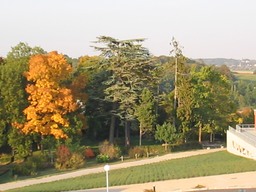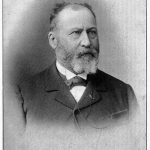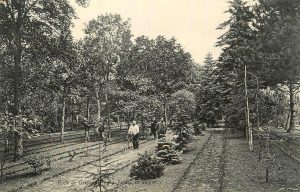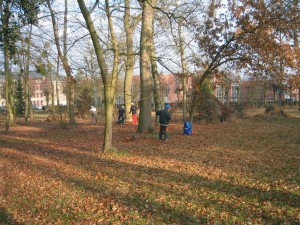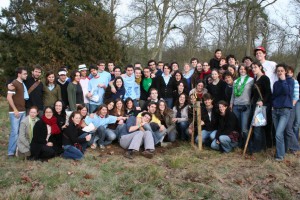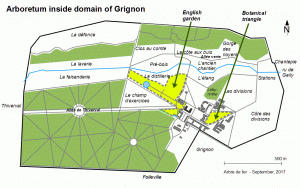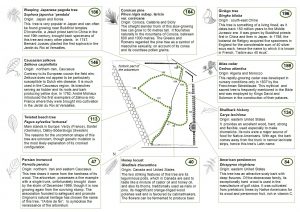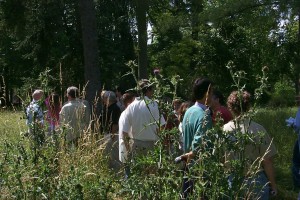View of the arboretum
Arboretums can hardly serve to counterbalance man’s destructive fury but, beyond the beauty and harmony they promote, they are centres of knowledge where plant species are preserved. They are a vital scientific and pedagogical tool and play an important role in the protection of our botanical heritage. Succeeding generations of enthusiasts have passed on this inheritance as a precious treasure.
Laure Bringer
(The aboretums in the Ile-de-France and Centre regions of France, doctoral thesis in pharmacy, September, 1998)
[This english introduction in PDF]
History of the arboretum
A “dendrological garden” was created in about 1873 from seedlings planted by Pierre Mouillerfert (1846-1903), a teacher of forestry at the then Ecole nationale d’agriculture de Grignon. The trees and shrubs were classified by family and genus and arranged in rows for more convenient study.
In the absence of written archives, it is not clear how the arboretum developed until an inventory was drawn up in 1975-1978, with the two hundred or so trees and a number of plantations being clearly identified.
The last dedicated gardener maintained the arboretum until his retirement in 1985. A new inventory was carried out by a scientist from the French Agronomic Research Institute in 1991.
Thanks to training in pruning techniques by the CFPPAH centre in nearby Saint-Germain-en-Laye, basic maintenance was carried out as long as the centre remained active on the site, which was until about 2007.
The violent storm, known as Lothar, of December 1999, had a devastating impact on the arboretum, with winds exceeding 100 kilometres an hour. 23 trees were uprooted and 16 others damaged.
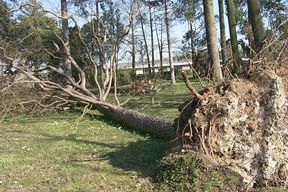
Arboretum after 1999 storm
Since 2001, the Arbre de fer association has gradually been implementing a plan to rehabilitate the historic part of the arboretum, by tidying and improving the site and compiling a new inventory
Localization
The Grignon arboretum is now spread over two different zones within the campus of AgroParisTech in the park of the Grignon estate, near Versailles.The original part is situated in the botanic triangle of the campus and is currently being renewed and enhanced in the English garden zone.
This arboretum with its 200 species is a one of the major collections of trees in the Ile-de-France region.
Though not normally open to the public, the Arbre de fer association regularly organises visits. Those interested are invited to contact us.
